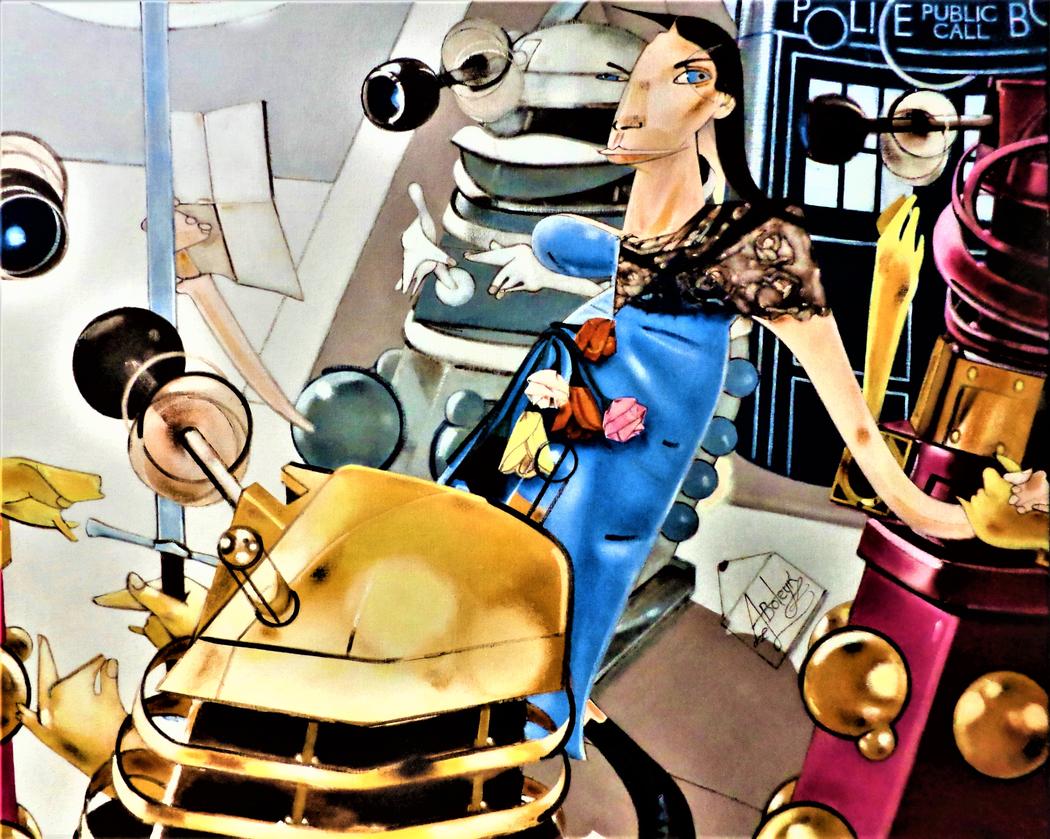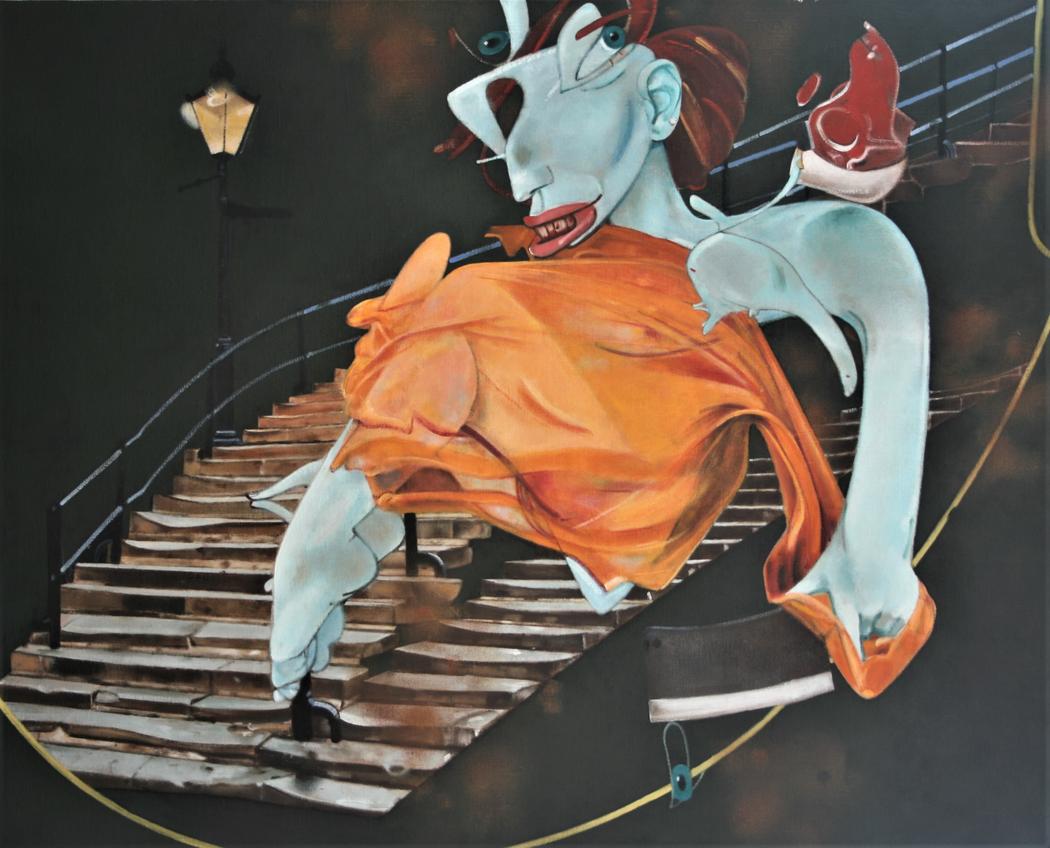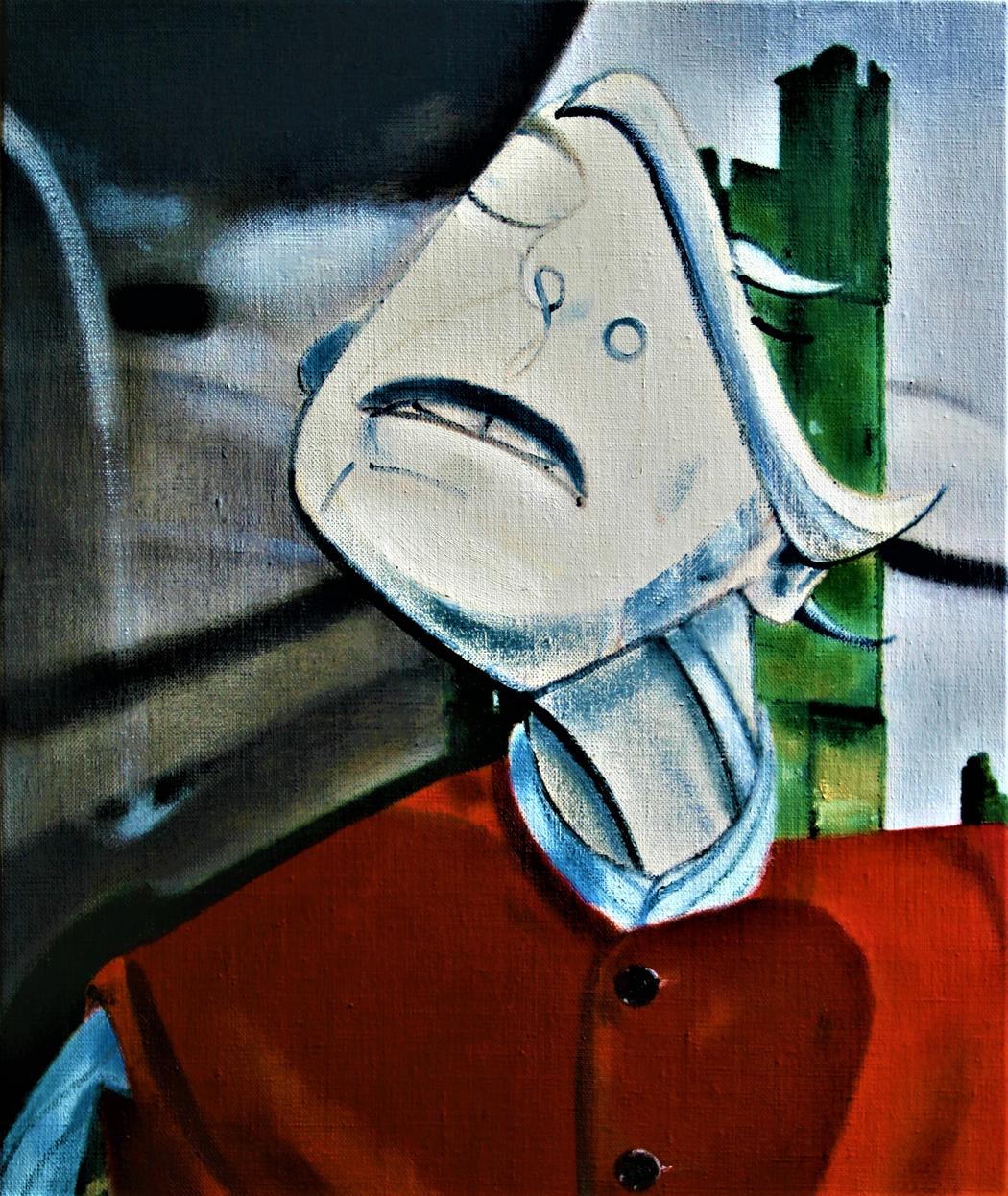Tim Clarke
Year of birth: 1957
Where do you live: I live and work in Leicester, UK
Your education: Stourbridge Art College (Foundation, 1974); Cheltenham Art College (BA Fine Art, 1975–78); Trent Polytechnic (MA Fine Art, 1984–86)
Describe your art in three words: Love of life
Website
In what ways has Leonardo’s legacy influenced your artistic journey?
Before seeing the book on Leonardo when aged 14, I had very little interest or awareness of art. Reading that book and seeing reproductions of his work for the first time changed my life completely. I was enthralled by his astounding drawing ability, the range of his drawings and captivated by his paintings. Seeing The Virgin of the Rocks and The Virgin and Child with St Anne and St John the Baptist in the National Gallery, London as a teenager count as the most sacred kisses of my life. I wondered if I too could create a sense of awe in art. I set about answering that question which has occupied me now for over 50 years.
My painting process follows Leonardo’s where I conceive my ideas in drawing books, develop them and make all necessary studies before starting to paint in oil. I love the complexity of his paintings, his backgrounds, enigmatic smiles and pointing fingers, symbolism and numinous nature making ordinary extraordinary. My fifty years of painting have been the richest, deepest and most difficult parts of my life. I am eternally grateful to Leonardo da Vinci for giving me so much.
How did your experience of drawing dancers with learning difficulties shape your approach to movement and form?
With no models I painted figures from photographs which increasingly became unsatisfying. I felt my figures were stilted and not revealing the energy, vitality and enigma of being human. Having found photographs of dancers I looked for more and came upon a brochure for Derby Dance Centre which significantly included a photograph of two dancers with special needs. This photograph deeply moved me. Having contacted their choreographer, she invited me to a performance of this group named Indigo. She then allowed me to draw them in class. This experience was pivotal to my maturity as an artist. They were superb, friendly, kind and most importantly oozed expressive movement in ingenious ways. Straight away I was able to capture their brilliance with rapid drawings which because of their speed brought constant surprises in form. I was working too fast to think and was allowing my hand to spontaneously dance with the dancers. These drawings gave me the deep sense of boundless human nature that I had been lacking, providing a sense of movement in dynamic, exaggerated, distorted, surprising forms that were unique and profound. I am very grateful to the Indigo dancers. Other dancers without special needs were unable to inspire me. I felt they were no way near as imaginative and accomplished as Indigo.
 Tim Clarke | Anne Bolelyn Reading Her First Letter From Henry Viii With Attendants | 2021
Tim Clarke | Anne Bolelyn Reading Her First Letter From Henry Viii With Attendants | 2021
What inspires your recurring focus on women in your paintings?
‘Sexuality and spirituality are pairs of opposites which need each other.’ Carl Jung
When I was a boy, say 8 years old, a British singer named Kathy Kirby regularly appeared on television. I was in awe realising what a wonderful thing a woman is. Whilst she was clearly very attractive physically it was the power of her voice and presentation which moved me. Painting her is my present project.
I find females much more interesting than males. The kindness and gentleness which I have received from women has deeply impressed me. I find communication with women natural and uplifting, whereas I associate violence, disappointment and emotional coldness with men. I need to make clear not all men are bad, and not all women are good. Also, I feel sexual magnetism with some women. That bewildering energy which causes so much strife has made me celebrate in paint some women nude. To balance the view that I am objectifying women sexually I began a series of small oil portraits of actresses that I drew at Shakespeare’s Globe Theatre. All of them are dressed. This series is exclusively female. I feel by this I am making a statement against sexism and revealing my respect and admiration for women. I accept misogyny has blighted womenkind for millennium. It is wrong. Perhaps beneath misogyny is unrealised fear of women and equally unrealised is love of women. So, I paint them repeatedly with my love and fear, realised and unrealised. I love celebrating female achievement and especially love painting Dakini, the most powerful female form I am aware of. Dakini means ‘sky walker’, they are so integrated that normal things like gravity do not concern them. They are enlightened Buddhas, full of wisdom and compassion.
Nature appears often in your work – birds, tigers, butterflies. What emotional or symbolic significance do these elements hold for you?
I am amazed and enthralled by other species and feel a huge urge to respect them by including them in my work. Whilst I know there is a great deal of folklore connected to the natural world; I am not always aware of it. Their wonderful differing forms and individual beauty are enough for me. Creativity in the natural world is staggering. To me a butterfly wing is like a stained-glass cathedral window.
Recently I leant Carl Jung wrote that the anima can be represented symbolically by a tiger, a sake or bird. I had included all these in my paintings, unconscious of Jung’s symbolism. I have been conscious of the great power of the unconscious since my twenties and accept things will be happening in my work that I am not aware of.
I revere all species and feel privileged to be alive with so many wonderful forms of life. I feel bound to include some of them in my work, knowing we are profoundly interconnected. We are different forms of one soul. My prime aim is to paint this soul in an ongoing series of oil paintings.
 Tim Clarke | Dakini And The Second Coming Of Jesus Christ
Tim Clarke | Dakini And The Second Coming Of Jesus Christ
Your pieces often combine realistic textures with surreal, distorted forms. What draws you to this visual language?
Drawing dancers in movement resulted in distorted forms. This begged the question should I made the whole painting consistent with distortion? Should I distort my backgrounds and other parts of my painting, or would I accept different styles in the same painting? I answer this question in different ways. Sometimes I make distorting changes to my backgrounds and sometimes I make very little changes and am content to be photographic. I came to accept that differing styles in the same paintings was a distinct advantage. Variation is a very important consideration in my work.
When asleep my dreams are always realistic or photographic. There is never anything shown in an impressionistic way. Everything is exact. They often include bizarre, illogical and challenging elements. I like my paintings to have this dreamlike exactness together with challenging connections. A feature of my work is connection. I marvel at how nature connects the most disparate of forms with staggering brilliance.
What has oil on canvas allowed you to express that acrylic on paper could not?
For me my decades of painting on paper first in gouache then acrylic was a period of learning. Gradually my painting became more and more accomplished. My dancer works on paper were decisive in making me believe my ability had matured. I was confident that I had developed a coherent language and felt I wanted that language to be expressed in the classic medium of oil and canvas. As well as changing paint I scaled up at the same time by increasing my paper size 4-fold to establish my new large canvas size. Also respecting tradition, I began making my own oil ground. It was not changes in materials that altered my expression but accumulation of years of practice. I understood I had become a potent force and wanted a medium to match.
 Tim Clarke | Glenda Jackson As King Lear
Tim Clarke | Glenda Jackson As King Lear
There’s a strong theatrical and narrative presence in some of your paintings. Do you consider storytelling a part of your work?
Once I have an idea, I want to present it as powerfully as possible, as dramatically as possible, as captivating as possible. To achieve these ends composition is vital. I seek to join my figures and animals with their backgrounds, interior or landscape where the whole composition supports, extends and increases the value of each contributing component; every part being vital to each other in painting as in life, making every painting greater than the sum of its parts.
Story telling is part of my practise of painting. All my works are stimulated by heartfelt personal experience. Each have stories associated with them. I see my whole body of work as a narrative. It is like a book except each page of a thousand words is a painting or drawing.


Leave a Reply